Mark Peacock
... my research

Menu:
Dr. Mark Peacock
office #:
BPS blg, Room 3255
address:
Michigan State Uni.
567 Wilson Road
East Lansing
MI 48824
email:
mpeacock msu.edu
msu.edu
My research
Below is a light summary of some of my recent projects. For more details of these projects, and other research, please see my my publications.
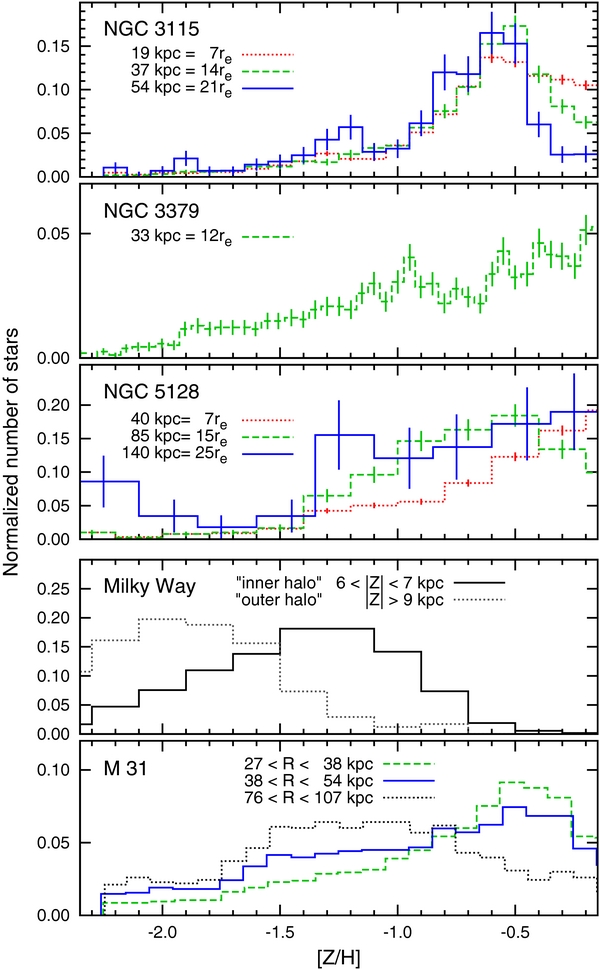 The stellar halos of galaxies, from resolved stellar photometry
The stellar halos of galaxies, from resolved stellar photometry
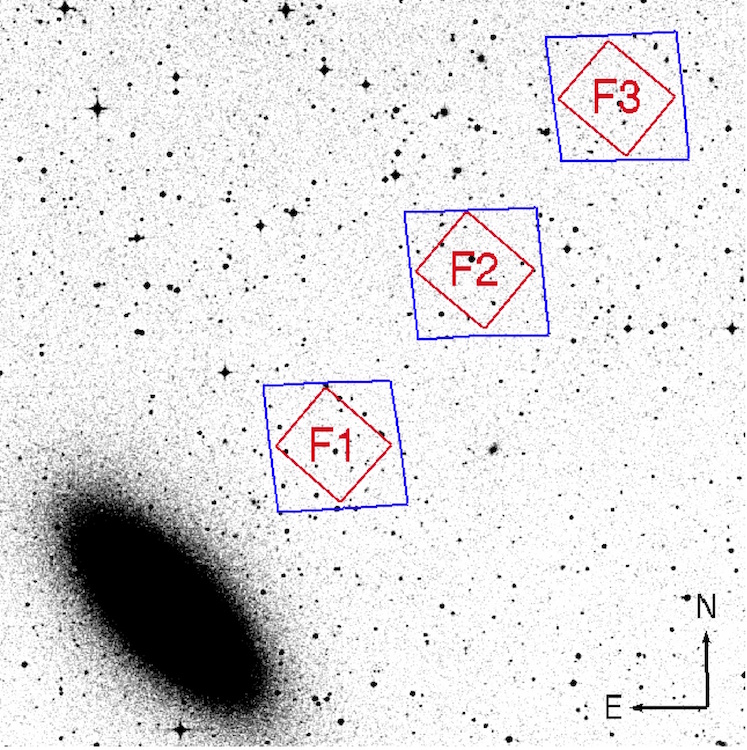 The stellar halos of galaxies contain a unique fossil record of their past, preserved by their low densities and long relaxation times. As such, observations of these halos can provide key clues to the assembly histories of galaxies and important tests for theories of galaxy formation. However, due to their faintness and low stellar density, the halos of galaxies beyond the local group are quite poorly understood. Using the Hubble Space Telescope (HST), we can directly resolve stars in the outer halos of local galaxies. The image to the left shows the halo regions targeted by our recent study of NGC3115. In typical ground based images like this, these regions appear to be beyond the galaxy in the bottom left. This is because the surface brightness becomes very low. However, we confirm the presence of many halo stars, even in our most distant field (at around 25 effective radii). A highlight of our work is the first direct detection of a metal-poor halo in an ealry-type galaxy.
... click for more details
The stellar halos of galaxies contain a unique fossil record of their past, preserved by their low densities and long relaxation times. As such, observations of these halos can provide key clues to the assembly histories of galaxies and important tests for theories of galaxy formation. However, due to their faintness and low stellar density, the halos of galaxies beyond the local group are quite poorly understood. Using the Hubble Space Telescope (HST), we can directly resolve stars in the outer halos of local galaxies. The image to the left shows the halo regions targeted by our recent study of NGC3115. In typical ground based images like this, these regions appear to be beyond the galaxy in the bottom left. This is because the surface brightness becomes very low. However, we confirm the presence of many halo stars, even in our most distant field (at around 25 effective radii). A highlight of our work is the first direct detection of a metal-poor halo in an ealry-type galaxy.
... click for more details
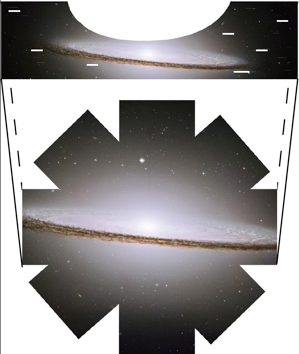 Globular clusters as chemo-dynamical tracers
Globular clusters as chemo-dynamical tracers
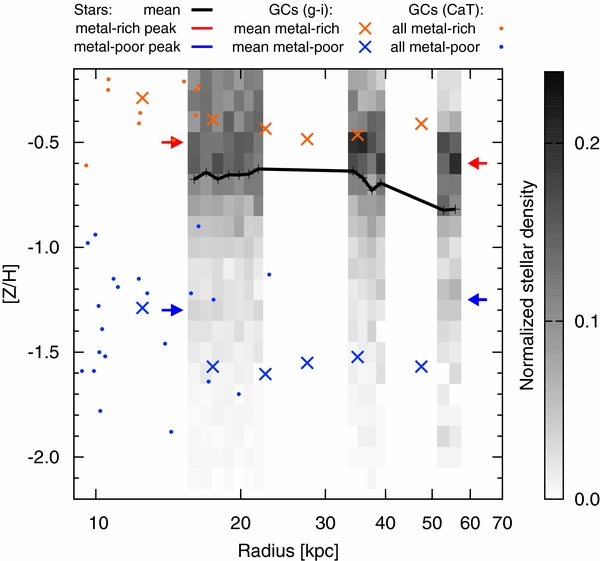 Globular clusters are associated with periods of major star formation. This makes them powerful probes of the underlying stellar populations, which are much fainter and hard to study directly. The SAGES / SLUGGS surveys are currently utilizing this fact to study the nature of early-type galaxies from their globular cluster systems. We recently confirmed that the globular clusters in NGC3115 do accurately represent its underlying stellar populations. In this galaxy, the stellar halo and globular clusters both have distinct metal-rich and metal-poor populations, which have similar metallicities and radial profiles.
... click for more details
Globular clusters are associated with periods of major star formation. This makes them powerful probes of the underlying stellar populations, which are much fainter and hard to study directly. The SAGES / SLUGGS surveys are currently utilizing this fact to study the nature of early-type galaxies from their globular cluster systems. We recently confirmed that the globular clusters in NGC3115 do accurately represent its underlying stellar populations. In this galaxy, the stellar halo and globular clusters both have distinct metal-rich and metal-poor populations, which have similar metallicities and radial profiles.
... click for more details
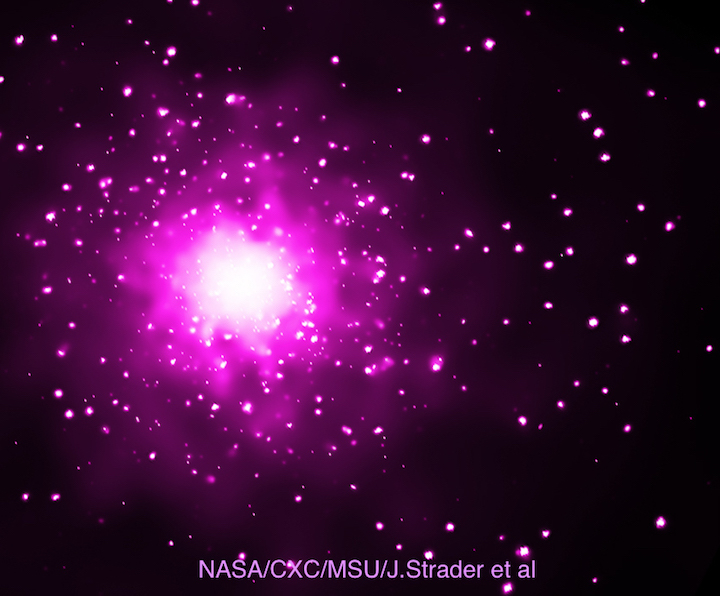 Exploring the stellar initial mass function (IMF) with X-ray binaries
Exploring the stellar initial mass function (IMF) with X-ray binaries
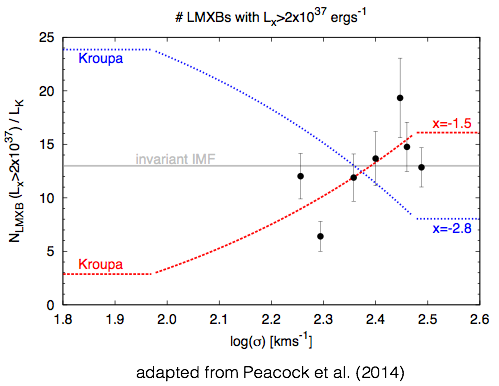 The IMF describes the initial distribution of stellar masses in a stellar population. The shape of this distribution has important implications for the evolution of a galaxy, and its integrated properties. Unfortunately, it is very challenging/ impossible to directly measure the IMF for galaxies beyond the Milky Way and its satellites. Therefore, a common IMF, based on that of the Milky Way, is often assumed. Recent work has suggested that the IMF may not be invariant, but rather vary systematically with galaxy mass. We've proposed a method of constraining variations in the important high mass end of the IMF, based on a galaxy's low mass X-ray binary populations. We use observations from the Chandra X-ray observatory to determine the LMXB populations of local galaxies. To date our work favors an invariant IMF, but we are continuing to constrain this with new observations.
... click for more details
The IMF describes the initial distribution of stellar masses in a stellar population. The shape of this distribution has important implications for the evolution of a galaxy, and its integrated properties. Unfortunately, it is very challenging/ impossible to directly measure the IMF for galaxies beyond the Milky Way and its satellites. Therefore, a common IMF, based on that of the Milky Way, is often assumed. Recent work has suggested that the IMF may not be invariant, but rather vary systematically with galaxy mass. We've proposed a method of constraining variations in the important high mass end of the IMF, based on a galaxy's low mass X-ray binary populations. We use observations from the Chandra X-ray observatory to determine the LMXB populations of local galaxies. To date our work favors an invariant IMF, but we are continuing to constrain this with new observations.
... click for more details
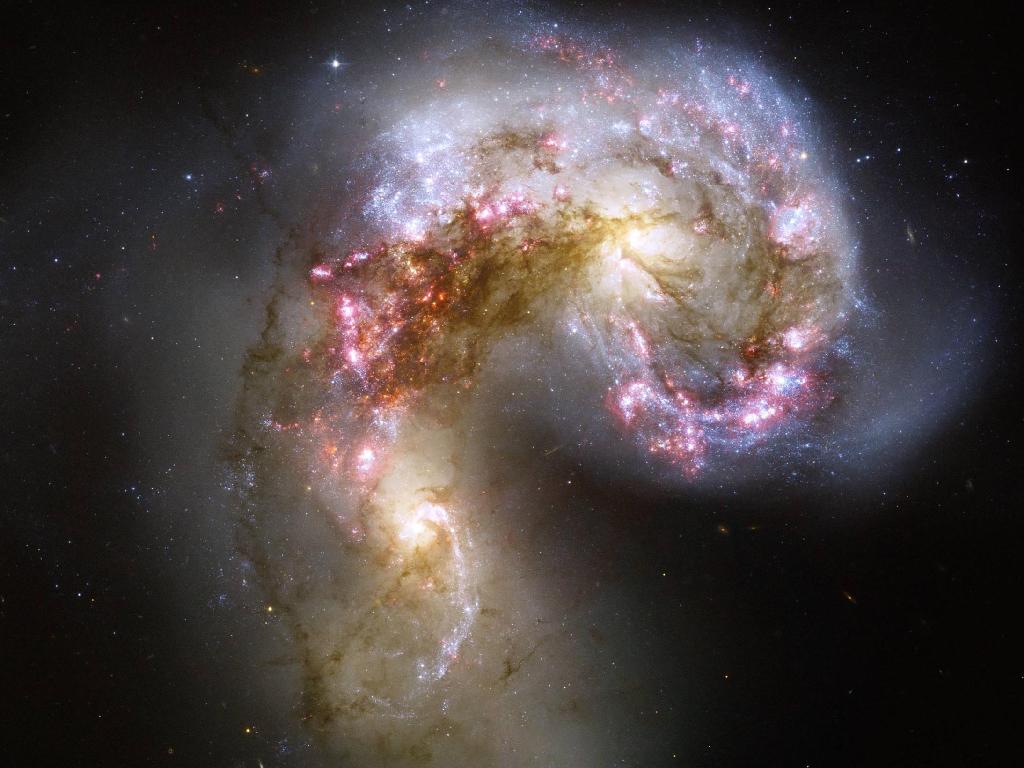 Multiple generations of stars in globular clusters
Multiple generations of stars in globular clusters
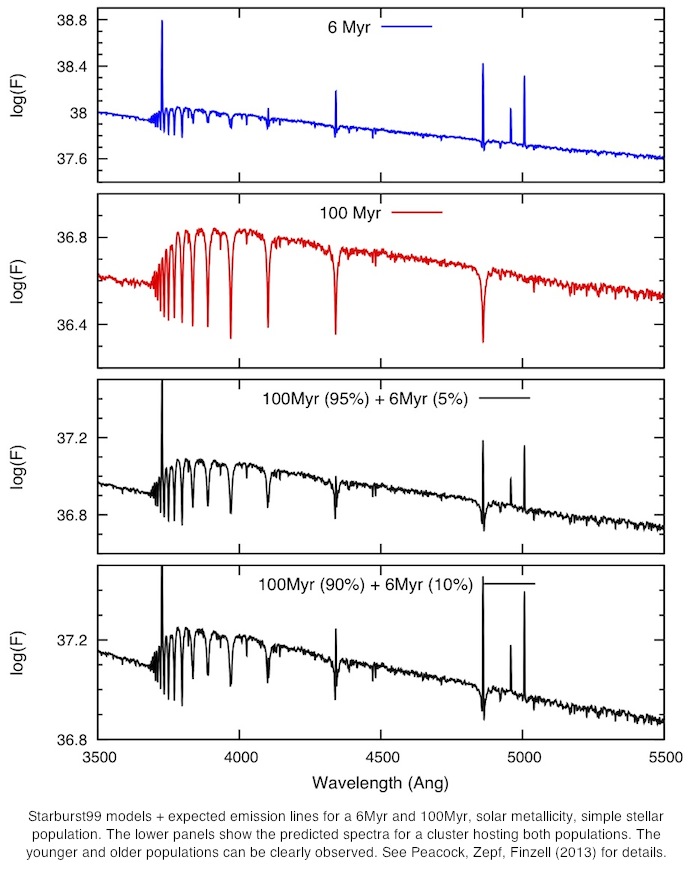 Traditionally globular clusters have been considered simple stellar populations, where the stars have similar ages and abundances. This was a reasonable conclusion based on their similar main sequence turnoffs and narrow red giant branches. However, there is now strong evidence that that most (if not all) Galactic globular clusters host multiple generations of stars. This revolution in our understanding of globular clusters has challenged our previously simplistic ideas for their formation. I'm interested in extending this work to extragalactic globular clusters. This enables us to study the ubiquity of multiple populations and to observe clusters that are still at an early stage of their formation. We've identified testable signatures of multiple generations in the integrated emission from star clusters. This can provide vital constraints on theories of cluster formation. Our work includes testing for multiple populations in the young star clusters of the Antennae galaxies and relatively nearby globular clusters in M31.
... click for more details
Traditionally globular clusters have been considered simple stellar populations, where the stars have similar ages and abundances. This was a reasonable conclusion based on their similar main sequence turnoffs and narrow red giant branches. However, there is now strong evidence that that most (if not all) Galactic globular clusters host multiple generations of stars. This revolution in our understanding of globular clusters has challenged our previously simplistic ideas for their formation. I'm interested in extending this work to extragalactic globular clusters. This enables us to study the ubiquity of multiple populations and to observe clusters that are still at an early stage of their formation. We've identified testable signatures of multiple generations in the integrated emission from star clusters. This can provide vital constraints on theories of cluster formation. Our work includes testing for multiple populations in the young star clusters of the Antennae galaxies and relatively nearby globular clusters in M31.
... click for more details
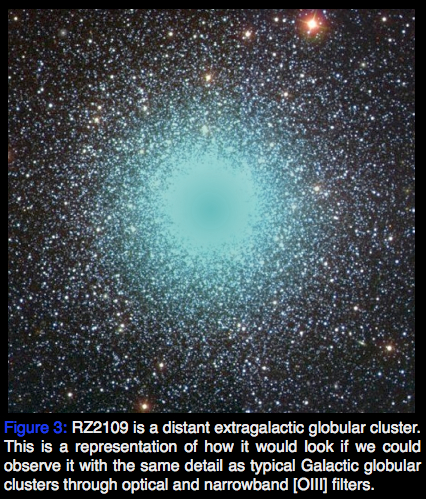 An extraordinarily large nebula in a globular cluster revealing clues to the nature of its black hole
An extraordinarily large nebula in a globular cluster revealing clues to the nature of its black hole
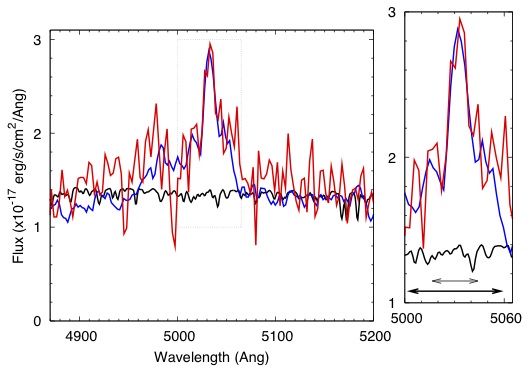 Ultra-luminous X-ray (ULX) emission from a globular cluster in the giant elliptical galaxy, NGC4472, is thought to originate from accretion onto a black hole in the cluster. Using HST STIS observations, we obtained spatially resolved spectroscopy of this cluster. Our work revealed that the [OIII] nebula in this cluster is resolved on parsec scales, similar in size to the cluster itself. Nebulae are extremely rare in globular clusters and this remarkable emission is likely related to the ULX source. Our analysis suggests that this interesting system is the result of an accreting stellar (rather than intermediate) mass black hole, which is driving a wind from the system.
... click for more details
Ultra-luminous X-ray (ULX) emission from a globular cluster in the giant elliptical galaxy, NGC4472, is thought to originate from accretion onto a black hole in the cluster. Using HST STIS observations, we obtained spatially resolved spectroscopy of this cluster. Our work revealed that the [OIII] nebula in this cluster is resolved on parsec scales, similar in size to the cluster itself. Nebulae are extremely rare in globular clusters and this remarkable emission is likely related to the ULX source. Our analysis suggests that this interesting system is the result of an accreting stellar (rather than intermediate) mass black hole, which is driving a wind from the system.
... click for more details
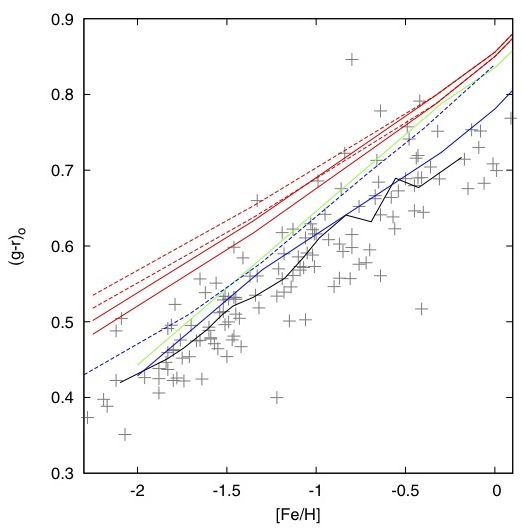 Globular clusters and stellar population models
Globular clusters and stellar population models
Beyond the very local Universe, the stellar components of galaxies cannot be resolved. Instead, we rely on using stellar population synthesis models to predict the underlying stellar population from observed integrated emission. Accurate stellar population synthesis models are therefore vital to a range of astrophysical problems. As relatively simple stellar populations, globular clusters can be used to calibrate and test these models. I'm interested in using cluster observations from the UV through IR to explore these models. One of our projects compared the SDSS ugriz colors of M31's globular clusters to test the predictions of some commonly used models. This identified a significant offset between model predictions and the observed g-r colors of these clusters. This is similar to that seen in SDSS luminous red galaxy (LRG) samples, where it might suggest a population of young stars. The detection of this offset in the relatively simple stellar populations of these globular clusters suggests that the issue is actually with the models (possibly the spectral libraries used).
... click for more details
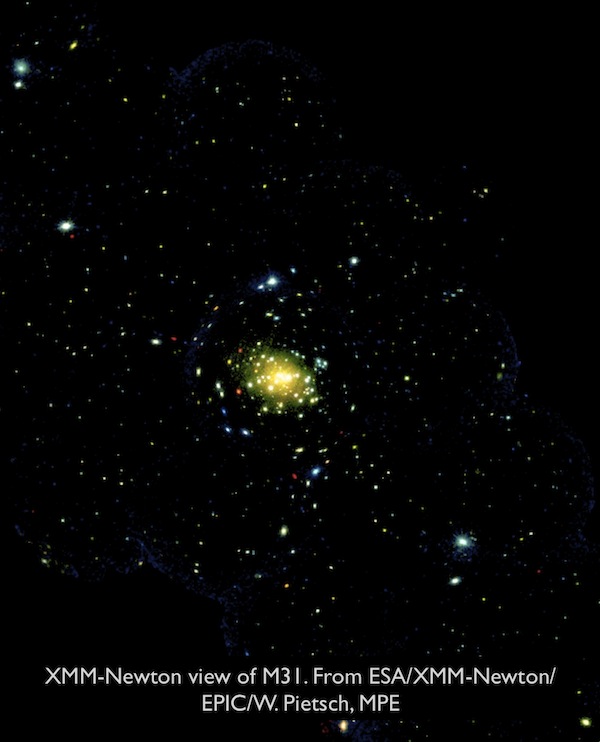 Low mass X-ray binary systems
Low mass X-ray binary systems
Globular clusters are great locations to study low mass X-ray binaries (LMXBs). Such systems are very common in these clusters and the properties of the clusters that host them can provide clues to their formation and evolution.
We utilize Chandra and HST observations to study the LMXB populations in these galaxies and their globular clusters. Using these observations, we’ve helped to constrain the X-ray luminosity function (XLF)
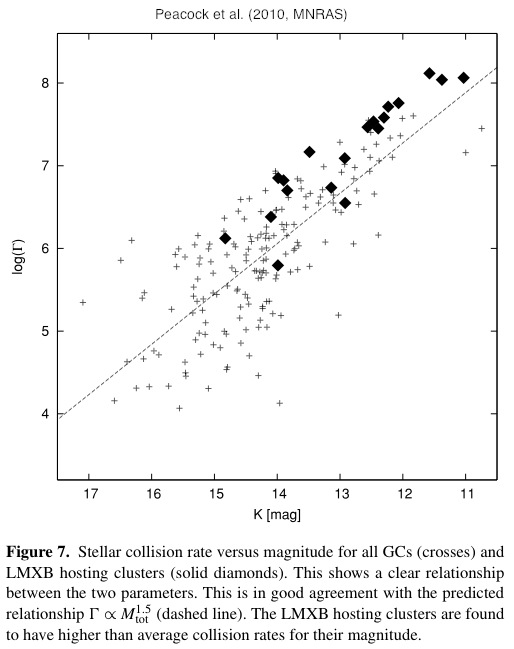 of LMXBs in the field and globular clusters, showing that they have different shapes. This suggests different donors, primaries or orbital periods and favors a non-globular cluster origin of the field LMXBs.
of LMXBs in the field and globular clusters, showing that they have different shapes. This suggests different donors, primaries or orbital periods and favors a non-globular cluster origin of the field LMXBs.
We've also produced the most complete study of LMXB's in M31's globular clusters. This utilized the large XMM-Newton mosaic of the galaxy. The proximity of these clusters allows their us to detect all LMXBs in outburst and study the properties of their host clusters in detail. A highlight of our work demonstrated a strong correlation between the stellar interaction rate in a cluster and the presence of LMXBs - providing strong observational evidence that LMXBs are produced via dynamical interactions in these clusters. ... click for more details
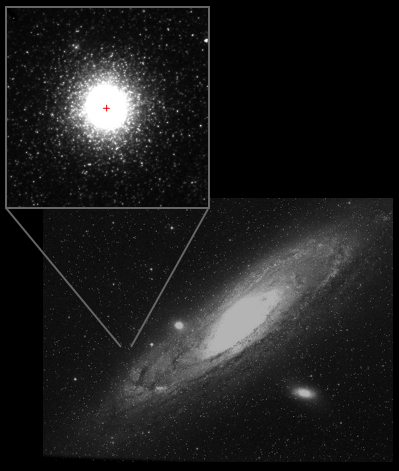 M31's globular cluster system
M31's globular cluster system
M31 hosts the largest and possibly most diverse globular cluster population in our local group. Its proximity to us makes it an important bridge between the well-studied clusters in the Milky Way and the more distant, but more numerous and diverse, extragalactic cluster systems. We've produced a comprehensive catalog of these clusters providing optical ugriz photometry from SDSS observations and near-IR K-band photometry from UKIRT/WFCAM observations. Through King model fitting we've also measured the structural parameters for a large number of these clusters, providing one of the best samples available for investigating dynamical processes in globular clusters. For more details, check out our
paper.
A copy of our photometric and structural parameter catalog of M31's globular clusters is available from my M31 globular clusters page. This page also contains cutout images and data for each cluster.